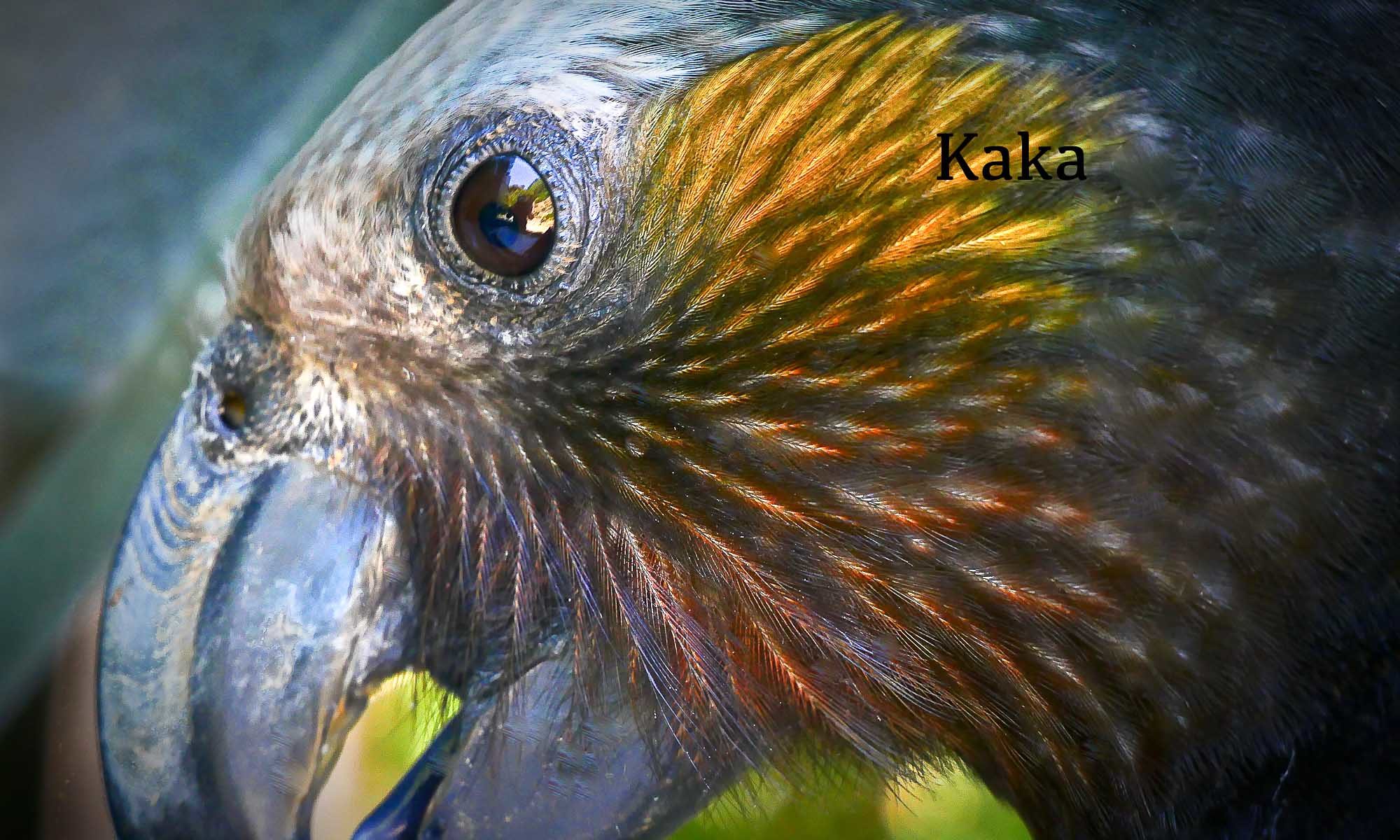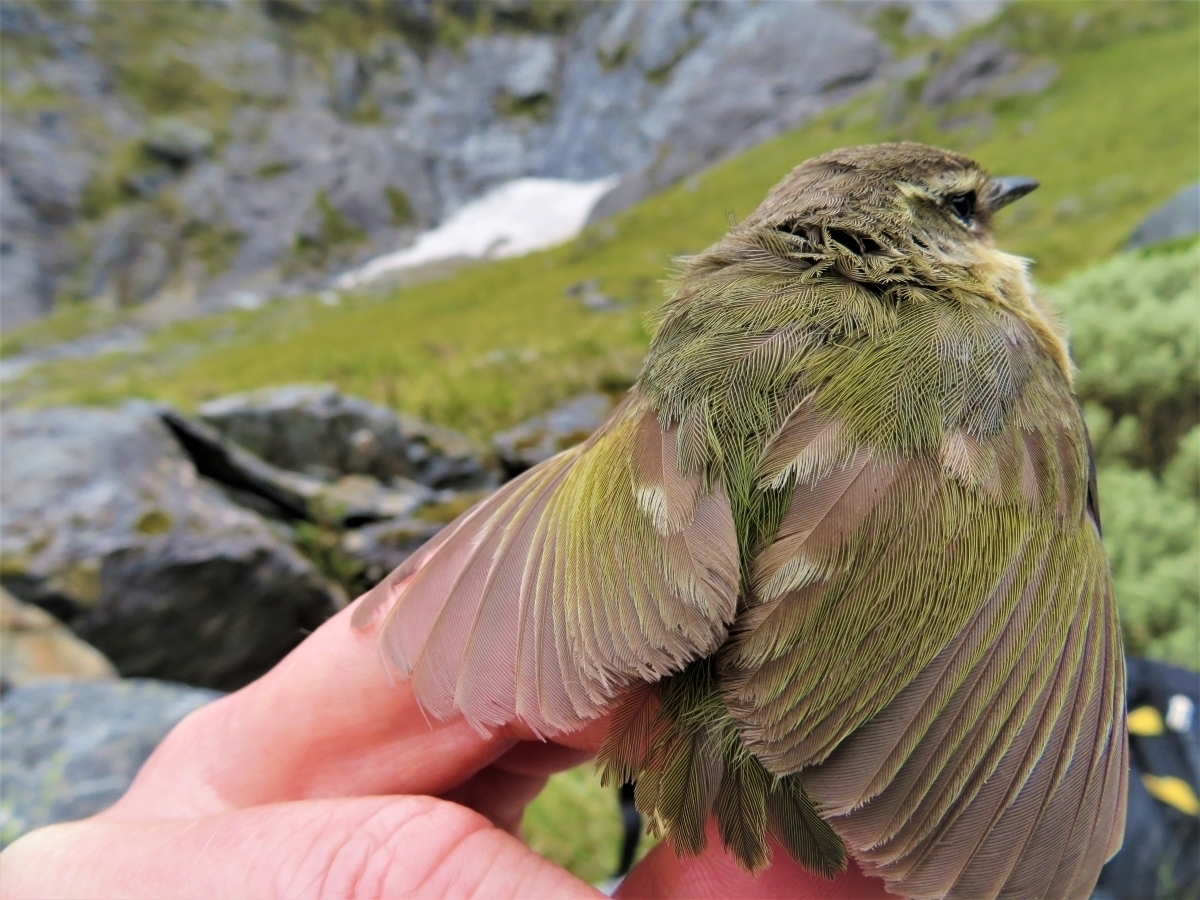Focused on two alpine study sites; the Crucible Basin within the Siberia Valley and the Upper Lucidus/Castalia Basin within the north branch of the Wilkin Valley with extension into adjacent basins. Rock wren monitoring transects defined and surveyed initially for both sites during 2017/2018. The results of this survey work guided deployment of alpine invasive mammal traps and subsequent installation of Celium remote trap monitoring technology to improve predator control trap servicing efficiency and provide additional information on predator movements (first image above shows a male rock wren in moult, note abraided wing and tail feathers).
Following ABT’s initial rock wren monitoring transect surveys undertaken during summer 2017/2018 and observations during 2018/2019 breeding season ABT have now commenced colour banding of individual birds.
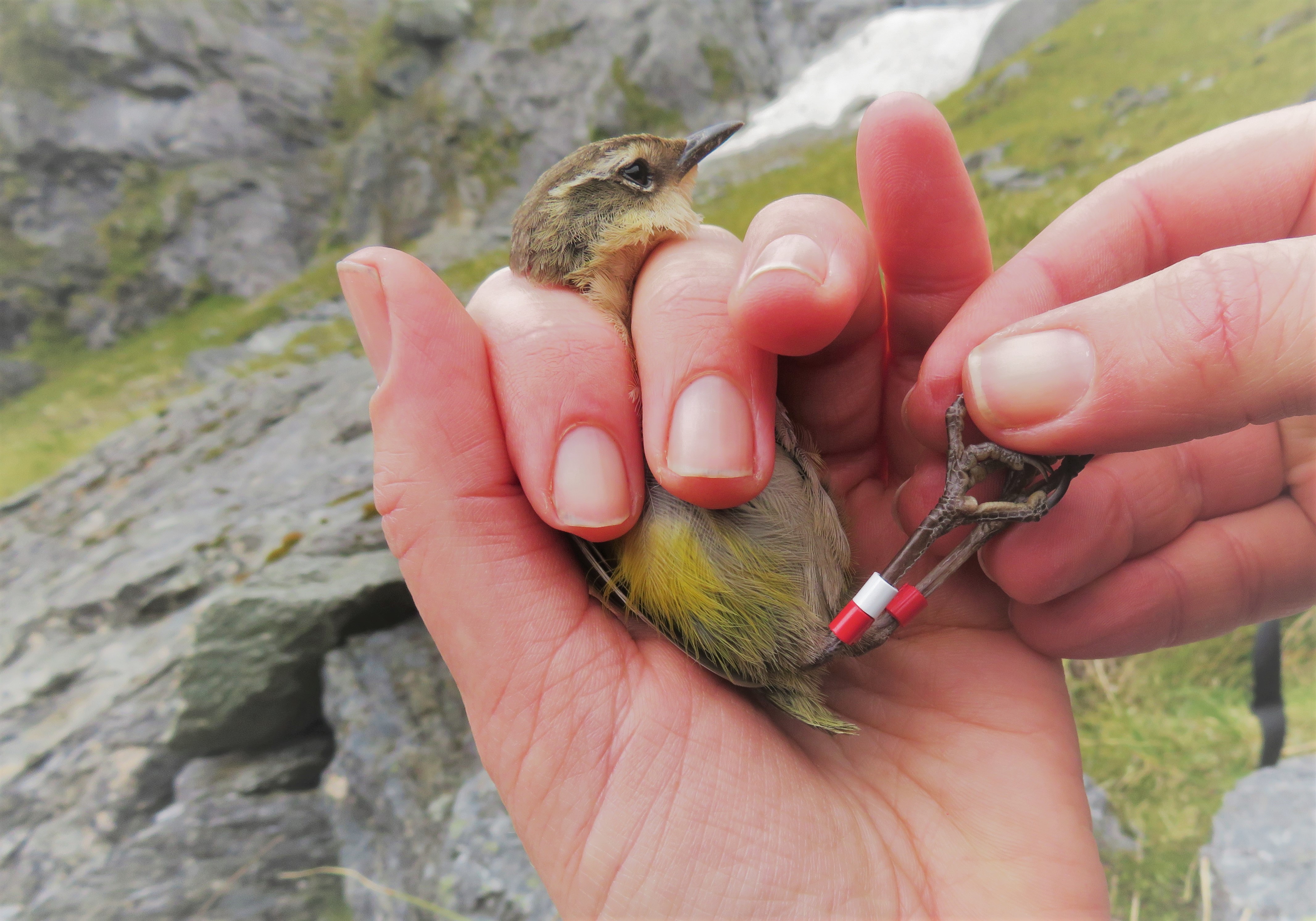
This bird monitoring method helps to identify individual birds, confirm rock wren territories and provide information on dispersal and survival of post-breeding juveniles whilst providing an indicator of predator control success. We can also learn about moult strategies for this unique alpine passerine.
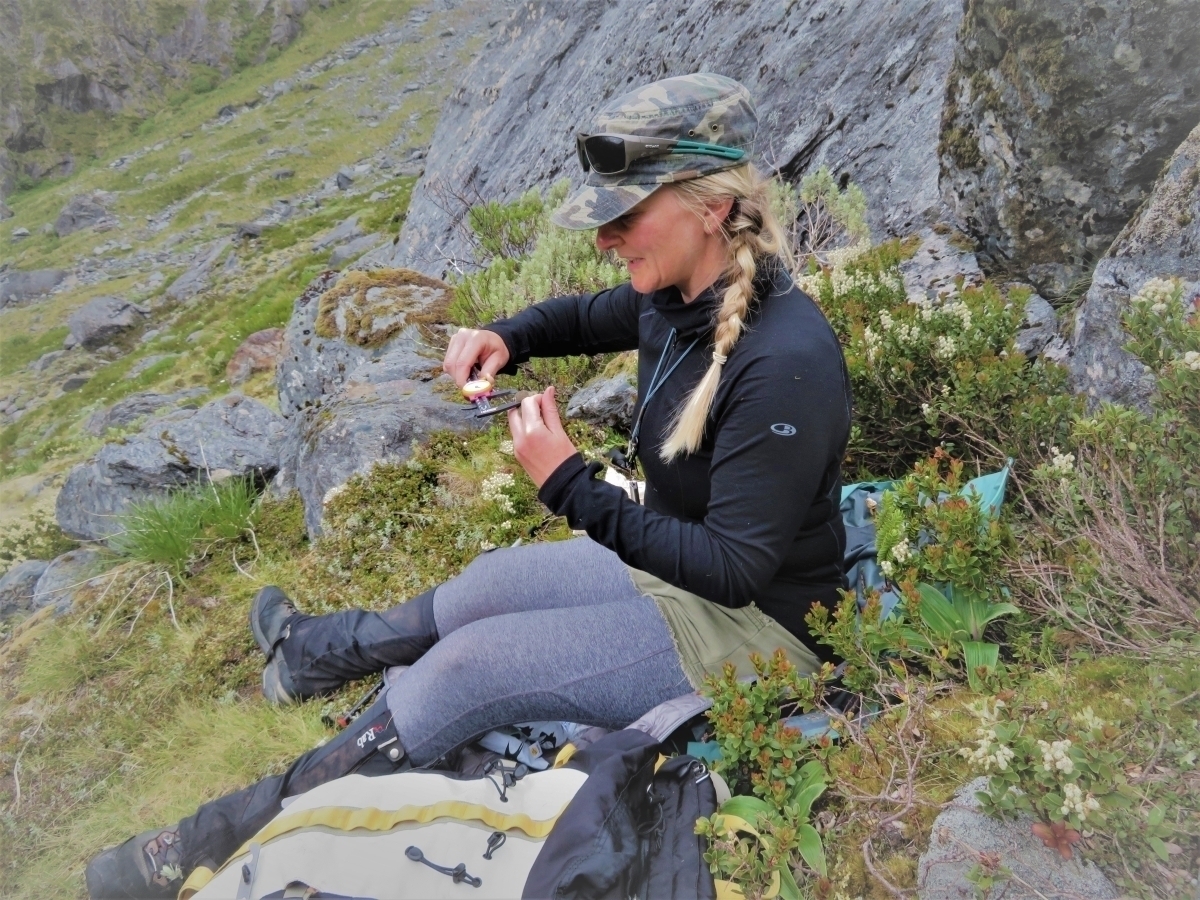
Specialist mist nets are errected within known breeding territories and an audible lure is used to encourage individuals into the net. The mist net shelves are kept low as rock wren flight is limited and birds often forage close to the ground on terrestrial insects (spiders, moths, beetles and flies) and berries from low growing plants such as Muehlenbeckia axillaris (below).
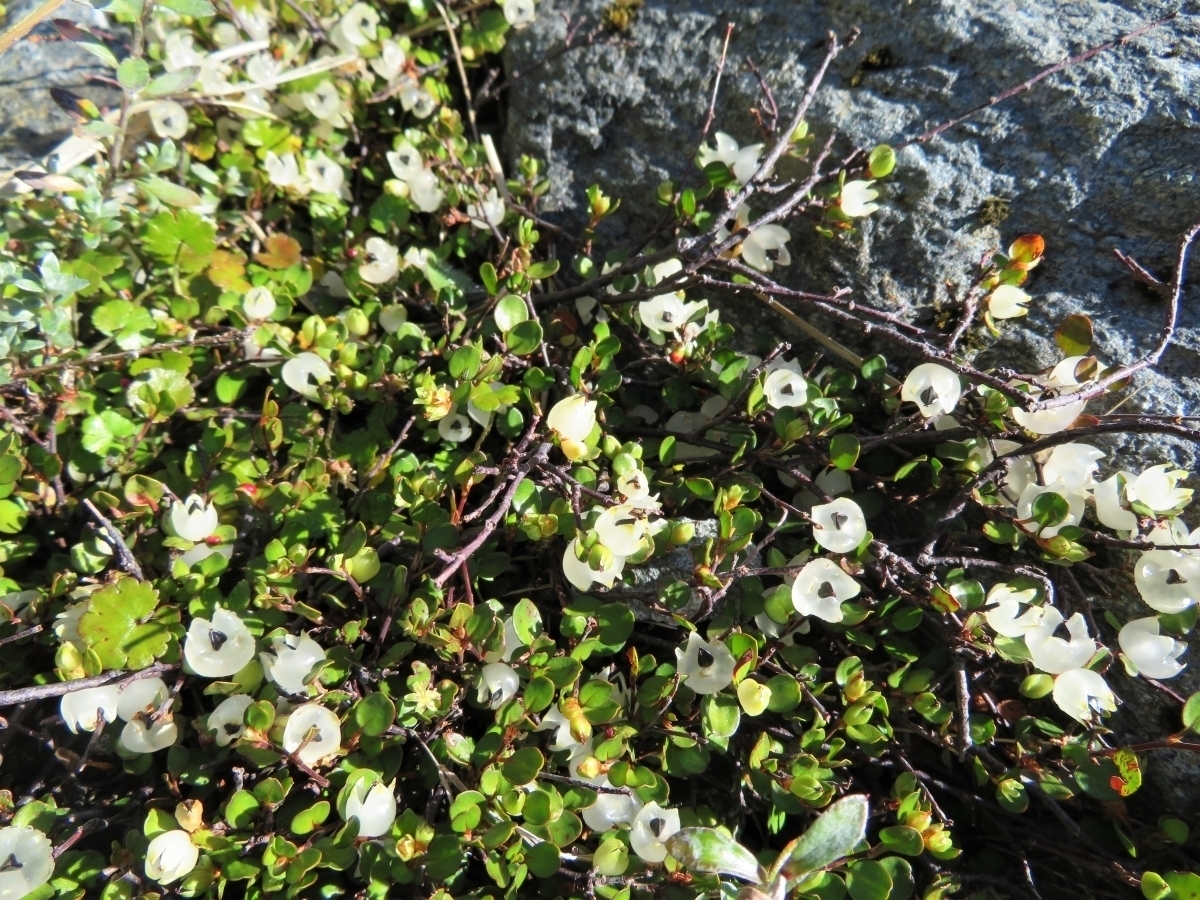
All birds are carefully extracted from mist nets by a NZNBBS certified bird bander. Three colour bands (two on the right leg, one on the left) are carefuly applied, biometric measurements taken and any observations on moult or body condition are recorded.
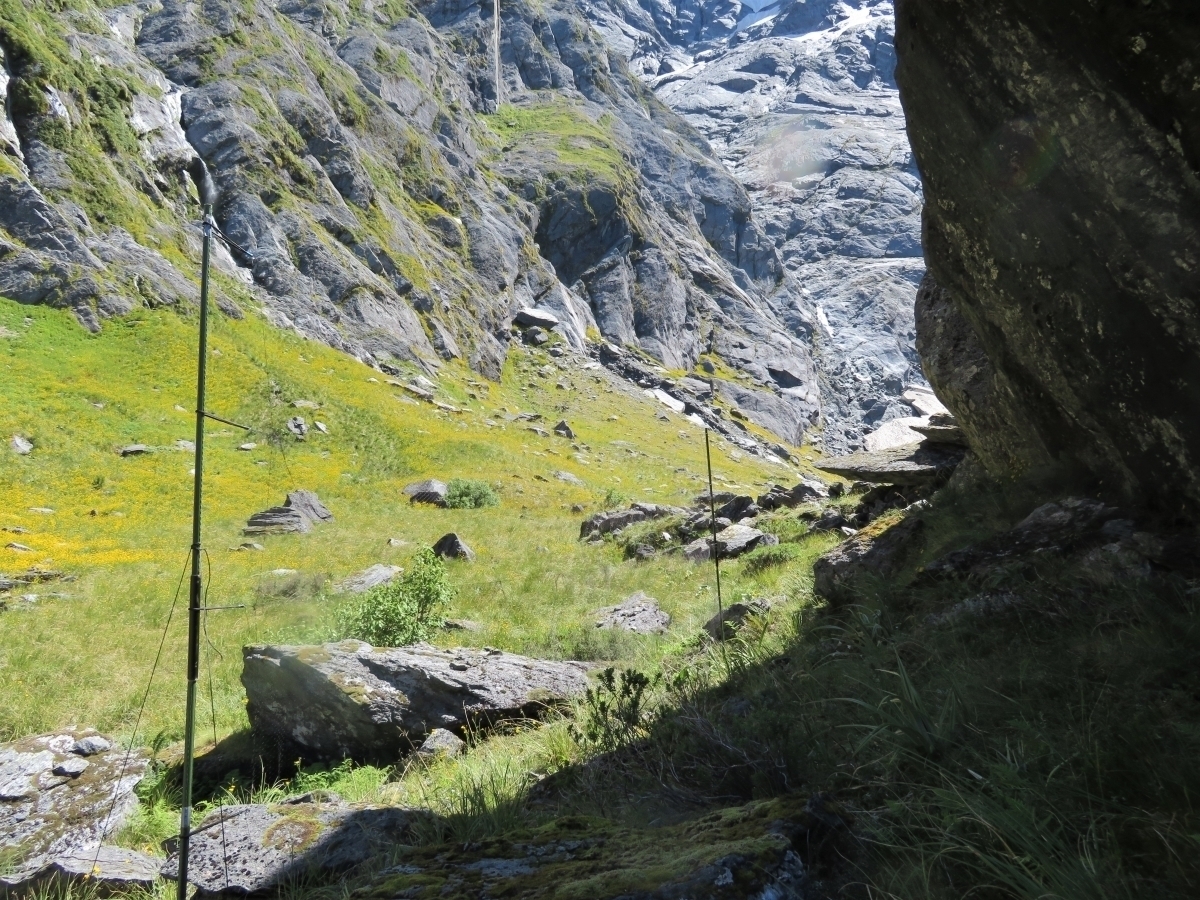
A combination of adult and juvenile birds have been banded during the 2019/2020 season. Images below show an adult male with a prominant supercilium and a weight of 14.6g. This bird appears to have gone through post-breeding moult (moulting is the periodic replacement of feathers by shedding old ones whilst producing new ones).
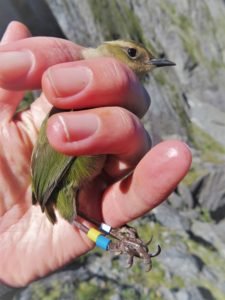
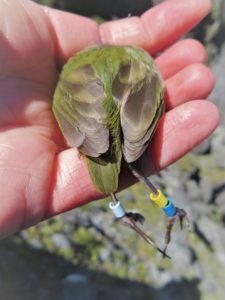
This monitoring work provides addition information on rock wren in an area which has not previously been investigated at this level, complementary to existing study sites such as in Fiordland, and Haast, contributing to overall knowledge to promote effective future conservation management for this nationally endangered species. We look forward to further progressing rock wren monitoring during the next breeding season 2020/2021.
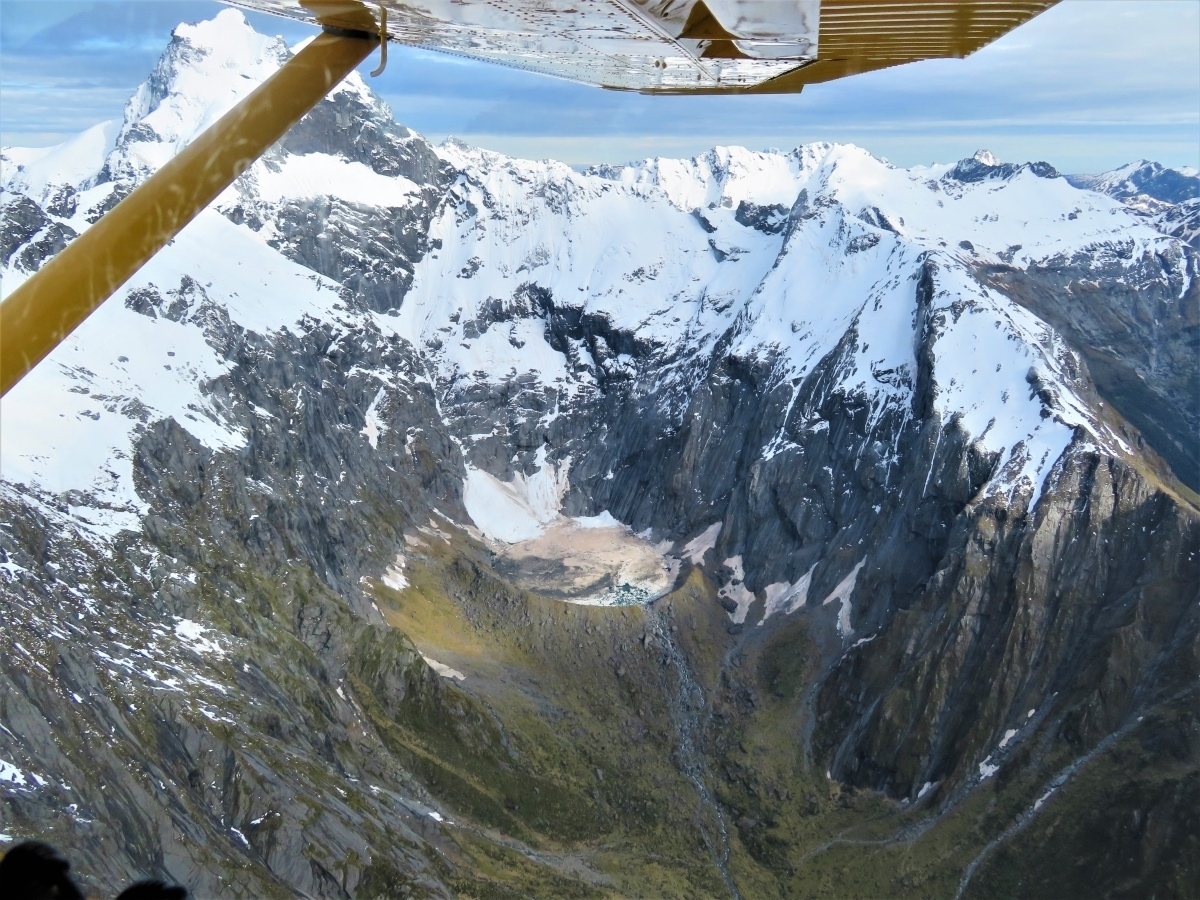
ABT’s rock wren protection and restoration programme forms part of a broader threatened species project for the Makarora Catchment from “ridge to river” and is complementary to the Department of Conservation Predator Control Plan for Makarora as referenced within ABT’s Community Agreement and in accordance with NZ Biodiversity Strategy i.e. to maintain and restore viable populations of all indigenous species across their natural range and maintainance of their genetic diversity.
With thanks to: Otago Regional Council, Perpetual Guardians Ltd, DOC Community Fund, Otago Community Trust, Backcountry Helicopters, Southern Alps Air and all amazing volunteers.
References:
Aspiring Biodiversity Trust (2018). Rock wren protection and enhancement programme. Helping protect and restore Makarora catchment threatened species.
Heath, S M 1989 The breeding biology of the rock wren, Xenicus gilviventris in the Murchison Mountains,
Fiordland National Park, South Island, New Zealand Otago University
Melville, D S (2013 reprint). Moult in birds. British Trust for Ornithology. Guide 19.
Melville, D S (2011). NZNBBS Bird Banders Manual. DOC, Wellington.
Weston, K A, O’Donnell C F J, van Dam-Bates P, Monks J M (2018). Control of invasive predators improves breeding success of an endangered alpine passerine. International Journal of Avian Science. Vol 160, Issue 4.
McNab, B K, Weston, KA (2020). The energetics of the New Zealand rockwren (Xenicus gilviventris): could a passerine hibernate? Journal of Experimental Biology 2020.
